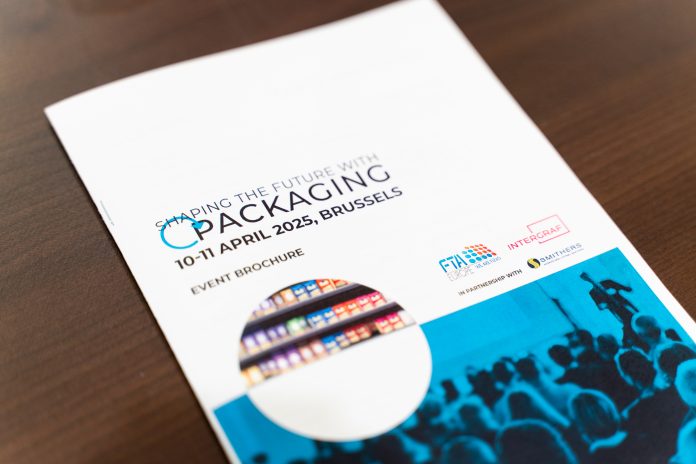
On 10 and 11 April, more than 100 delegates from 23 countries joined the Shaping the Future with Packaging 2025 conference to discuss the rapidly evolving packaging landscape. The event offered a look at the key regulatory, technological, and market trends shaping the future of printed packaging in Europe and beyond.
Moderated by Joanna Stephenson, managing director of Think B2B Marketing, the event brought together policymakers and industry leaders for two days of learning, collaboration, and in-depth discussions on key regulatory, technological, and market trends shaping the future of printed packaging in Europe and beyond.
The European printed packaging market is projected to grow to €114.6 billion by 2029, with an annual growth rate of 1.9%. Flexographic printing will grow steadily at 1.4%, increasing from €44.0 billion in 2024 to €47.2 billion in 2029. Overall, packaging remains a resilient, growing sector—especially in food and eCommerce—with increasing importance placed on sustainability, automation, and regulatory compliance.
Jo Harper Smith of Smithers presented the latest market data, noting that ‘packaging will use more water-based inks‘ as sustainability becomes a growing priority. He highlighted that digital printing is already widely used in pressure-sensitive labels and corrugated packaging—and is growing in cartons and flexibles.
From the European Commission (DG Environment), Ioannis Antonopoulos introduced the newly adopted Packaging and Packaging Waste Regulation (PPWR), which sets binding sustainability targets across the EU. While he acknowledged efforts to ease the burden on SMEs, he stressed that “everything placed on the market must comply, including products sold via online retailers, who will also face enforcement.”
Pieter De Buysser from NXTGEN gave a compelling take on artificial intelligence, likening tools like ChatGPT to “a game that helps us adapt to new technology like Microsoft Paint taught us to use the mouse.” He advocated for combining AI with company-specific data to gain a competitive edge but cautioned, “Do not use AI for everything you can use it for. It’s the choices you make that set you apart.”
Peter Stael, partner at Across-consult, highlighted the strategic role of retail in brand visibility, noting that “supermarkets have a major influence on how brands are shelved,” which in turn affects packaging decisions.
Case studies from Goglio and Ghelfi Ondulati, presented by Osvaldo Bosetti and Anna Vezzali, showcased successful transitions from traditional gravure to flexo and hybrid flexo-digital printing—driven by sustainability, flexibility, and shorter delivery times. Notably, Ghelfi’s shift away from plastic has been well-received by customers, and innovations like variable data printing have enhanced product traceability.
Jule Lejeune, managing director of FINAT, shared that after a 25% drop in 2023, the European label market rebounded by 15% in 2024. He emphasized that “sustainability and circular economy are strategic drivers” and that legislation like PPWR and Eco-Design are “on the agenda of all associations.” He also noted that consumers are more price-conscious, pushing brands toward flexible, tech-enabled solutions that balance cost-efficiency and sustainability.
Suhas Kulkarni, country head of SOMA Enterprise, gave an overview of South and Southeast Asia’s booming packaging sector, forecasting 4–6% annual growth by 2030. He pointed to rising trends in smart labels, eco-materials, and personalization.
Wrapping up the event, Paul Horton of Diageo discussed how AI-driven personalization is revolutionizing the US$ 117.98 billion gifting market. He introduced a scalable, platform-based model built on co-creation, innovation, and responsible AI use, showing how packaging can deliver emotional, customized experiences that truly connect with consumers.
The packaging industry is at a turning point, driven by a mix of new legislation, advancing technology, and changing consumer expectations. As companies prepare for the incoming EU requirements and increasing market complexity, flexibility, innovation, and collaboration will be essential.









